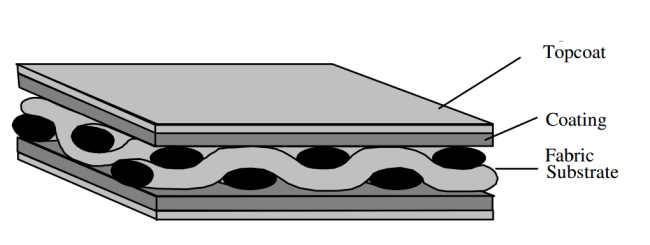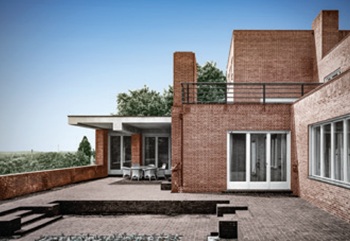Coating
[edit] Introduction
In the construction industry, a coating is a protective layer applied to the surface of a material (the substrate) to:
- Provide protection from some deleterious or unwanted effect, whether from rainwater, condensation, corrosive substances, (e.g zinc coating on iron, steel or other metal - called galvanising which provides a sacrificial zinc coating that protects the substrate from oxidation and corrosion.)
- To improve performance. For example, the properties of plain glass may be enhanced by a range of coatings which can improve its performance and aesthetic qualities, e.g reduce heat loss, minimise solar gain, apply a mirrored effect etc.
- Provide a decorative effect e.g paint (which also protects the substrate).
- Provide fire protection. Intumescent paint can be brushed or sprayed on and provides fire protection for a limited period. It works by swelling up when exposed to heat, increasing in volume and decreasing in density. The resulting ‘char’ retards the spread of flame due to its poor heat conductivity. Intumescent paints are used for passive fire applications such as fire -proofing structural steel.
- Seal a substrate e.g tensile fabrics, normally coated on both sides. If a fabric is to be used externally for a tensile structure, it is usually coated either with PVC or PTFE (Teflon) and can last in excess of 20 years. In some cases this may be further protected by a durable topcoat.
[edit] Application
In most cases, coatings are very thin, sometimes just microns thick, depending on how they are applied:
- Brush, e.g anti-rust paints and graffiti-resistant wall paints.
- Spray e.g lacquers which can be applied to furniture to both protect and enhance.
- Heat-cured e.g powder coating (sometimes called polyester powder coating (PPC)) which comprises polymer or thermoplastic powder that is heat cured to produce a coating of uniform thickness. The result is a very tough coating which does not suffer the unevenness, drips, runs and emissions of volatile organic compounds (VOC) normally associated with paints and sprays. Powder coating is typically used on aluminium profiles, household appliances and more recently, medium-density fibre-board (MDF). ‘Powder-coated’ aluminium door, window and structural profiles have become very common in the construction industry providing a full range of colours to harmonise with most designs.
[edit] Related articles on Designing Buildings
- Architectural fabrics.
- ETFE
- Fabric structures
- Finishes.
- Fixtures.
- Interior designer.
- Large-scale murals.
- Lead in construction.
- Paints and coatings.
- Passive fire protection is a vital tool in any fire strategy.
- Plaster.
- Plastic coating market.
- Plastic.
- Powder coating
- PTFE
- Rendering.
- Steel framed rooflights.
- The Anatomy of Colour.
Featured articles and news
Villa Wolf in Gubin, history and reconstruction. Book review.
Construction contract awards down £1bn
Decline over the past two months compared to the same period last year, follows the positive start to the year.
Editor's broadbrush view on forms of electrical heating in context.
The pace of heating change; BSRIA market intelligence
Electric Dreams, Boiler Realities.
New President of ECA announced
Ruth Devine MBE becomes the 112th President of the Electrical Contractors Association.
New CIAT Professional Standards Competency Framework
Supercedes the 2019 Professional Standards Framework from 1 May 2025.
Difficult Sites: Architecture Against the Odds
Free exhibition at the RIBA Architecture Gallery until 31 May.
PPN 021: Payment Spot Checks in Public Sub-Contracts
Published following consultation and influence from ECA.
Designing Buildings reaches 20,000 articles
We take a look back at some of the stranger contributions.
Lessons learned from other industries.
The Buildings of the Malting Industry. Book review.
Conserving places with climate resilience in mind.
Combating burnout.
The 5 elements of seiri, seiton, seiso, seiketsu and shitsuke.
Shading for housing, a design guide
A look back at embedding a new culture of shading.
The Architectural Technology Awards
The AT Awards 2025 are open for entries!
ECA Blueprint for Electrification
The 'mosaic of interconnected challenges' and how to deliver the UK’s Transition to Clean Power.
























